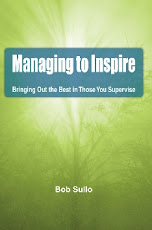“The
best violence prevention program is to build a sense of community.”
There
are a number of intervention strategies to deal with the ever-present and
increasingly alarming problem of bullying. As I frequently state in my presentations,
“intervention is never as effective as prevention.” Intervention is initiated after a problem has begun so
you’re scrambling and trying to play catch-up. In the case of bullying,
emotions often come into play and can drive the decisions we make. Decisions
made under emotion distress are not always the best.
Prevention,
on the other hand, is proactive. We don’t start out behind the 8-ball. There is
nothing more effective in preventing school violence and bullying than building
a sense of community. While there will still be disputes and skirmishes, they
are less likely to evolve into full-fledged violence or bullying when a sense
of community has been established.
Here
are a few questions to help you build a supportive school community. I suggest
discussing them with your colleagues in an effort to create effective action
plans:
- On a scale of 1-10,
with 10 being the most positive, how would you rate your school climate?
- Are you satisfied with
the rating you have given? If so, what do you need to do to maintain your
success? If you’re not satisfied, what can you do to create a more
positive school climate?
- What are the
qualities/characteristics of a “sense of community” in a school? How will
you know if your school has this “sense of community”?
- What can you (and your
colleagues) do to create a sense of community in your school?
- Will a sense of
community help minimize violence and bullying in your school? If so, is it
worth your time and effort?
As always, if you enjoyed this and found it useful, please
send the link to your friends. Thanks.
Bob Sullo
PO Box 1336
Sandwich, MA 02563
For information about books by Bob Sullo and to schedule a
keynote, workshop, or series for your school, agency, or parent group visit
www.internalmotivation.net






So true. The high school that is using my novel 'You Can't Shatter Me' to stimulate discussion on bullying with years 7 -10 is hoping that it will contribute to creating a positive climate in the school through its emphasis on teaching kids how to deal with their emotions regardless of whether they are the bully, the bullied or a bystander.
ReplyDelete